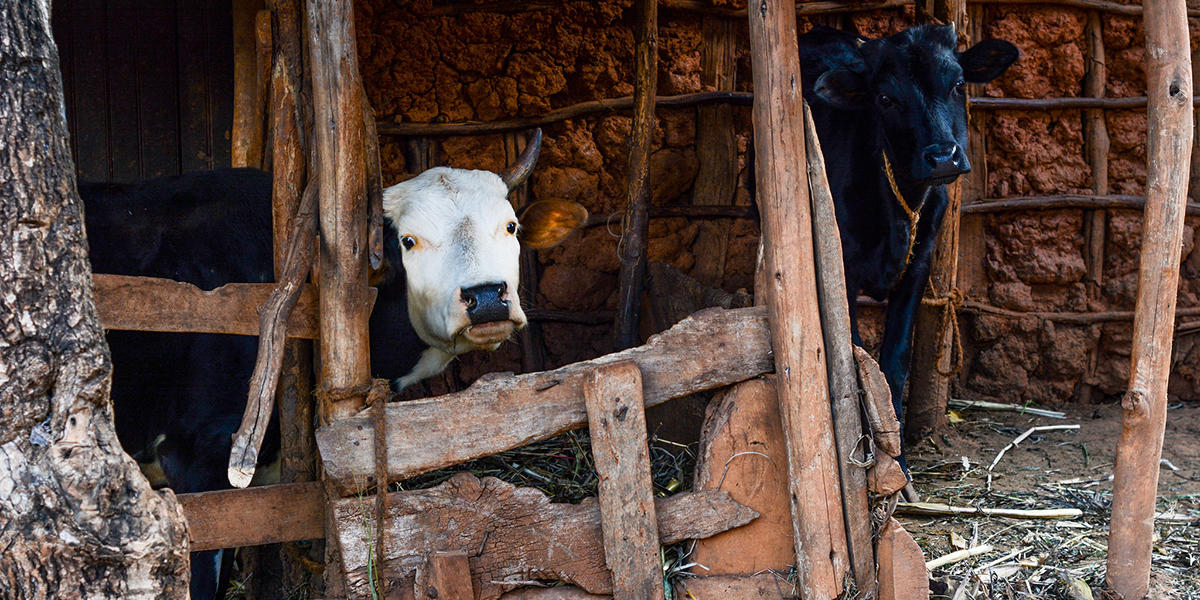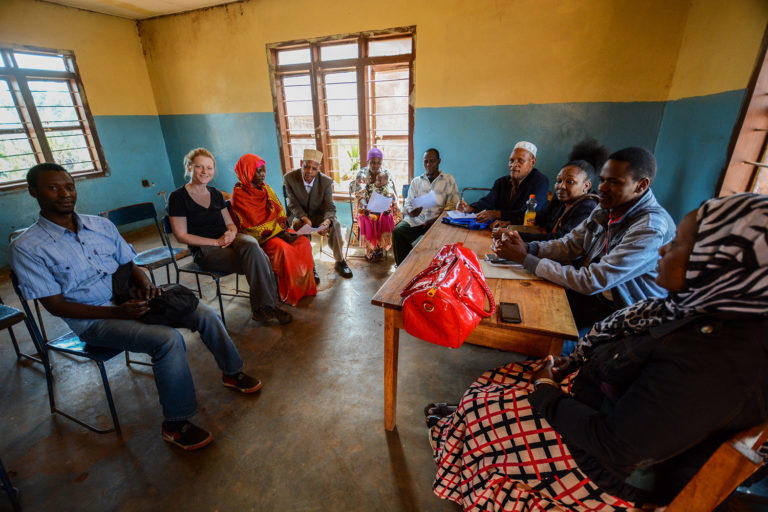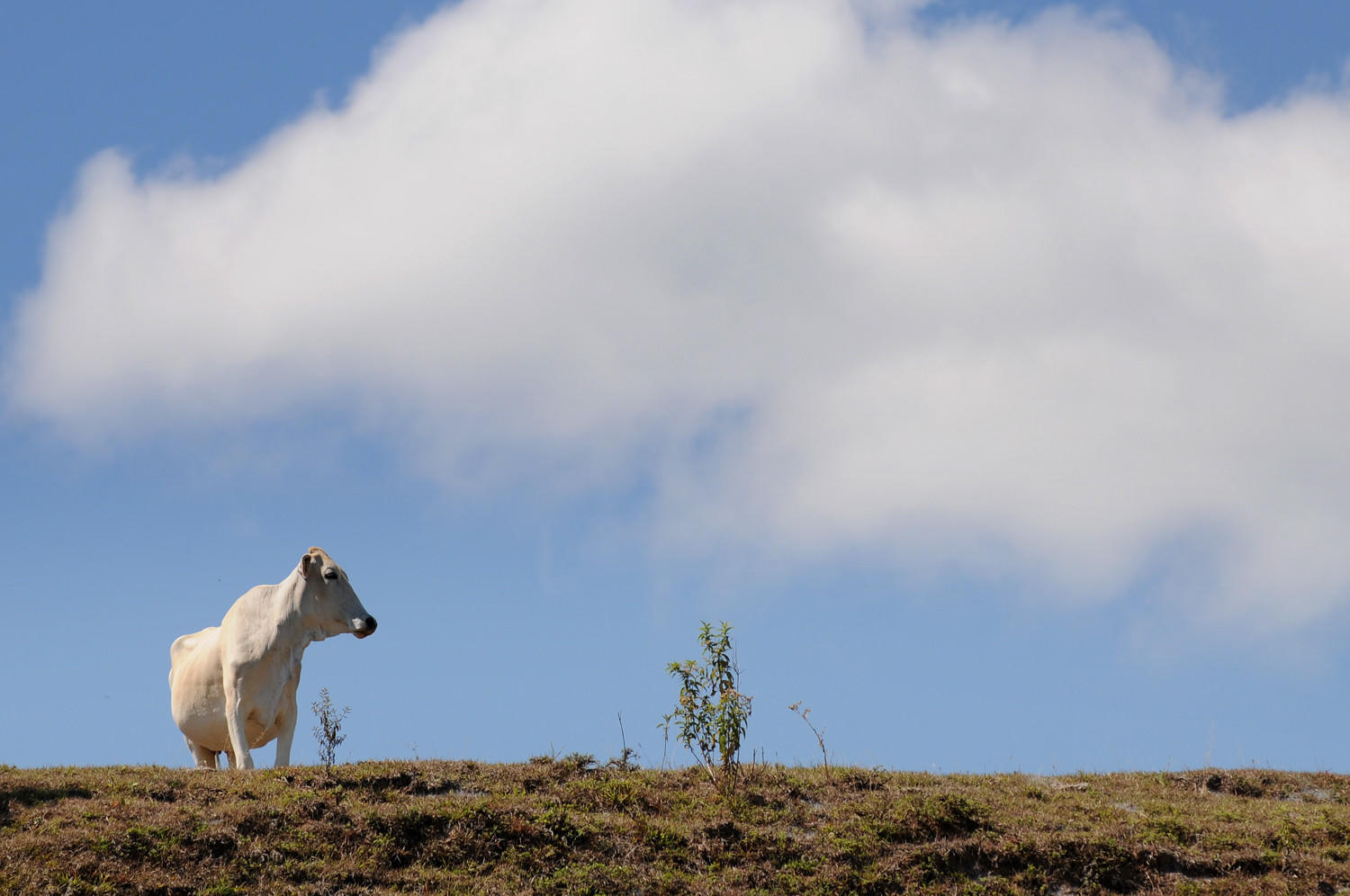Press and News Virtual Trainings Assess Sustainable Livestock Production

Researchers are conducting global trainings online with “CLEANED”, a tool that assesses the environmental impacts of livestock interventions.
Livestock plays an important role in the daily lives of farmers throughout East Africa. It provides human nutrition, food security, income, draught power, manure for nutrient cycling, and has important cultural value. However, the proliferating demand of animal-sourced foods associated with population growth, urbanization and increasing incomes is of growing global concern. The livestock sector is responsible for large contributions to greenhouse gas (GHG) emissions, land use change, soil degradation, water use and loss of biodiversity.
A deficit in the supply of animal protein for growing populations in most African countries presents increased challenges for livestock rearing. Scientists are still trying to find a balance between adequate, nutritious food production and long-term environmental sustainability.
To this end, assessing the environmental footprint of livestock systems can help decision-makers understand anyenvironmental tradeoffs. This promotes interventions that sustainably intensify livestock production by minimizing the negative impacts and enhancing the positive ones.

Livestock feed is one factor in increasing sustainable production. Credit: CIAT/G.Smith
A tool to assess environmental impact
It has been two years since the first CLEANED (Comprehensive Livestock Environmental Assessment for Improved Nutrition, a Secured Environment and Sustainable Development) trainings took place in Rwanda and Kenya, followed by trainings in Nicaragua, Honduras and Costa Rica.
CLEANED-X is a minimum data ex-ante environmental impact tool developed by the Alliance of Bioversity International and CIAT and partners. It enables users to explore multiple environmental impacts of interventions that transform livestock value chains, quantifying the footprints of different livestock productions systems in terms of:
- Land requirement for feed production (ha, ha/kg product)
- GHG emissions and carbon accumulation (absolute, per ha, per kg product, per protein)
- Soil health (Erosion, NUE, % area leached, % area mined)
- Water use (absolute, per ha, per kg product, per protein)
- Economics: simple Cost/Benefit, Net Present Value and Internal Rate of Return calculations for intervention scenarios

Farmers and researchers (pictured here: Birthe Paul and Beatus Zogela) have been working together to test livestock forages for improved sustainability. This picture is from Lushoto, Tanzania in 2016. Credit: CIAT/G.Smith
Shifting to online training
Although a face-to-face training was scheduled for May 2020 in Kenya, COVID-19 forced the team to quickly adapt and move online. The subsequent virtual training was designed to build the technical capacity of livestock researchers and technical staff within government ministries from Ethiopia, Tanzania, Uganda and Vietnam, enabling them to carry out CLEANED assessments as part of the CGIAR Research Program on Livestock’s projects in the four priority countries.
The Alliance’s Tropical Forages Program organized the two-week virtual training led by Jessica Mukiri, Emmanuel Mwema, An Notenbaert, Birthe Paul and Rein van der Hoek.
Participants included livestock researchers from international research centers, National Agriculture Research Centers, government environment ministries and development practitioners from Uganda, Ethiopia, Tanzania, Vietnam and GIZ participants from Tunisia.
Participants joined with diverse expectations; for example, Hung Le Van, a scientist from National Institute of Animal Sciences (NIAS), Vietnam, expected to learn more about and quantify environmental impacts of animal production. Nele Gloy, a development advisor from GIZ Tunisia, wanted to build skills that could enable her to support the government of Tunisia to design a sustainable dairy value chain. Godfroy Ngoteya, a coordinator from ILRI Tanzania, expected to incorporate climate smart approaches in implementing dairy initiatives.
All materials from the trainings, which were held via Microsoft Teams using PowerPoint slide decks, country breakout sessions, Menti polls for icebreaker questions, takeaway assignments, quizzes, and pre-recorded materials, can be found here.

Researchers and Tanzanian livestock farmers meet at an earlier stage of the project. Credit: CIAT/G.Smith
Results of the training
At the end of the training, participants were able to model a dairy enterprise in their respective countries, with a post-training evaluation showing over 80 percent confidence level for participants on the following:
- Gathering valid input data and ensuring context-specific parameterization for a CLEANED assessment.
- Using the CLEANED tool to quantify the environmental impact of livestock production enterprises and changes therein due to different intervention scenarios.
- Explaining the different CLEANED environmental indicators based on calculations and results.
- Raising awareness about the environmental impacts of livestock production.
- Describing the importance of carrying out environmental impact assessments in the livestock sector.
In summary, 90 percent of the participants agreed that the learning objectives and outcomes of the training were clearly defined and met, with applications to their daily work. It was great to hear the participants looking forward to employing CLEANED results to designing eco-efficient systems within their respective programs and initiatives.
“The experience was quite interesting; the model is diverse.” – Isaac Rubayiza, Climate Change Officer of the Ministry of Water and Environment Climate Change Department of Uganda.
“The easy-to-use CLEANED tool is useful for the evaluation of project proposals by donors and for providing input in investment decisions of local implementers, in the private and public sphere. It helps in decision making, leading to livestock interventions that improve incomes and food security with a minimal environmental footprint,” says An Notenbaert, an Alliance researcher behind the model’s development.
Through December 2020, country teams will conduct CLEANED assessments for pigs in Uganda, dairy in Tanzania, small ruminants in Ethiopia and multi-species farming systems in Vietnam as part of the Livestock CRP priority countries, with technical backstopping from the Alliance. Further information regarding CLEANED is available here.

Credit: CIAT/N.Palmer
This work is part of the CGIAR Research Program on Livestock, and is covered further in a forthcoming study which uses the CLEANED tool to model different intervention scenarios.
